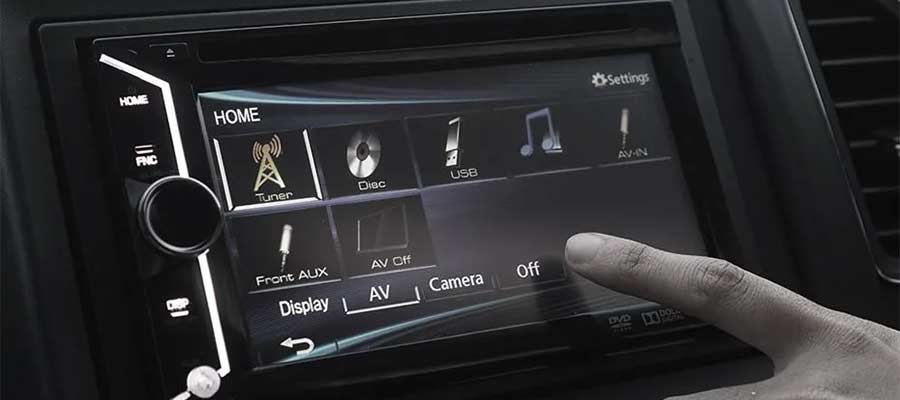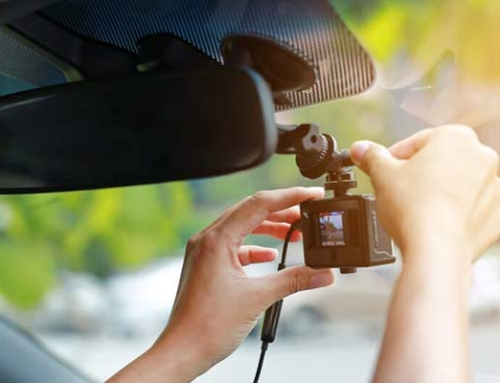
Are you looking to replace your car stereo? Like many of the mechanical and electrical components in your vehicle, your radio, speakers, and or amp will fail sooner or later. In many cases, this happens because of abuse. It’s not only teenagers who turn the volume control nob as far as it can go when their favorite song comes on the radio. At the same time, today’s car audio systems are far superior to those made in years past, but they are still a far cry from their aftermarket counterparts. And just like any aftermarket unit, when driven into clipping, they will distort, damage speakers, and, in some cases, fail! One major decision is whether you stick to OEM or go aftermarket. Here are a few things to know before buying a replacement car stereo!
Despite what a sound system is rated, the ideal constant operation level should be at most 50% to 60% of the advertised RMS power. LOL, you are probably asking what RMS is. I am not sure how it got started. Still, sometime during the 80s, manufacturers of rather crappy equipment started labeling or specifying amplifiers, speakers, and even head units with “peak power” rather than continues or RMS. I remember walking through the electronics stores at the flea market and seeing these BOSS car amplifiers rated at 2000 Watts. The graphics and the description were so enticing that I eventually purchased one to replace, or should I say upgrade, my Rockford Fosgate Punch 40. Boy, was I disappointed! Not only did the 2000 Watt BOSS amplifier was nowhere as powerful as my Punch 40, rated at 20 Watts X 2 RMS at 12.5 Volts, but it sounded like crap. What is the moral of the story? I have no idea how peak power is measured, but I can tell you it is 100% useless. If a speaker, an amp, or even a radio specifies only peak power and no RMS power, don’t buy it!
Car Stereo Replacement Tips
When it comes to replacing your car stereo, it’s not just about power. You must also consider what type of music you listen to and your source. This knowledge will empower you to make an informed decision when purchasing a new car stereo. Let’s review a few things you must consider when making this critical upgrade.
Power – We already discussed the difference between peak power and RMS rating. Many factory car radios are rated at about 10 watts of RMS power, which should give you an idea of where to begin. A head unit with 15 watts of power RMS can get loud and is considered a massive upgrade over many factory OEM units. Consider a head unit with little or no power if your power expectation is beyond that. That is because, more than likely, you will need or use an external amplifier, in which case the power from the head unit will not be used. For this reason, there is no need to pay extra for a high-power head unit. Instead, focus on a head unit with high voltage on a low level or RCS output.
Source – Today, finding a head unit with a built-in CD player is not easy. You may have better luck finding one that is DVD-ready. That is because MP3 has become the standard format for portable music. However, know that MP3 does not have the resolution and detail of the CD. Back then, vinyl, DAC, and open reel music buffs would tell you that CD did not have the warm and deep tone of analog formats such as records and tape. If you thought CDs sounded metallic and harsh, you would be appalled with how MP3s sound.
However, in our modern world, convenience is vital. As they say, they don’t make it like they used to. So, you must consider how to play external music from your phone or portable device on your new car stereo! The three most popular options are the head unit that has a USB plug, allowing you to connect a USB stick directly to it. Some units have an auxiliary 3.5mm jack like the one on smartphone headphones. However, you’re left with Bluetooth since many smartphones no longer have plugs. This wireless option ensures you can easily connect your device without any hassle.
Size and Look – With more and more vehicles on the road with info centers on the dash, the single DIM and old-school small radios are slowly but surely becoming obsolete. If your dash permits, you should consider a double DIM unit. These units are, the name explains, twice as tall and can display quite a bit of additional information. However, see it running and ensure that it is something you can live with. Many of these units have flashing lights and distracting graphics that can be annoying if you drive a lot at night. One, not well-known feature I suggest you look for is screen mirroring or the ability to work with Apple Play or Android Auto. These apps allow you to share not only your screen but also music, Google maps, and other applications with your vehicle’s sound system.
It is also important to point out that in some cases, companies like Alpine make direct aftermarket replacement head units and entire direct bolt-on systems that will blow your mind with the performance without changing the look and feel of your vehicle’s dash.
Choosing The Best Replacement Car Stereo
As you take all of this information in, also know that unless the head unit is damaged, adding a multichannel amplifier and replacing your factory speakers will yield an unprecedented performance upgrade. The reality is that many customers who come to us complaining about car stereo problems are related to a premium system such as BOSE, JBL, or INFINITY, whose amplifiers and or speakers have failed. In these cases, maintaining the factory radio and the factory look on the dash is best since all we need to do is replace the factory amplifier and speakers. At Car-Alarm-Miami.Com, we can upgrade your factory sound system or provide a simple replacement car stereo. It is your car. It is your music; just let us know how you like it! We offer brands like JVC, Pioneer, Kenwood, Clarion, and Alpine.
Choosing the best replacement car stereo depends on several factors, including your budget, desired features, compatibility with your vehicle, and personal preferences. Here are some steps to help you make an informed decision:
- Determine Your Budget: Start by determining how much you’re willing to spend on a replacement car stereo. Car stereos come in a wide range of prices, from budget-friendly options to high-end models with advanced features. Setting a budget will help narrow down your options and focus on products that meet your financial constraints.
- Identify Must-Have Features: Make a list of the features that are most important to you in a car stereo. Common features to consider include Bluetooth connectivity for hands-free calling and audio streaming, USB ports for playing music from external devices, smartphone integration (e.g., Apple CarPlay or Android Auto), touchscreen displays, navigation systems, HD radio, and compatibility with steering wheel controls or backup cameras. Prioritize the features that are essential for your needs.
- Check Compatibility: Ensure that the replacement car stereo you choose is compatible with your vehicle’s make, model, and year. Some car stereos are specifically designed to fit certain vehicles or require additional adapters and wiring harnesses for installation. Check the manufacturer’s specifications and consult with a professional installer if necessary to confirm compatibility.
- Research Brands and Models: Research different car stereo brands and models to find one that offers the features you need within your budget. Look for reputable brands known for their reliability, quality, and customer support. Read reviews from other customers to gauge satisfaction levels and identify any potential issues with specific models.
- Consider Sound Quality: If sound quality is a priority for you, pay attention to specifications such as RMS power output, signal-to-noise ratio (SNR), frequency response, and preamp outputs. Higher RMS power output generally translates to louder and clearer sound, while a higher SNR indicates less background noise. Consider factors such as built-in amplifiers, equalizers, and compatibility with external amplifiers and speakers to customize your audio setup.
- Evaluate Aesthetics and User Interface: Consider the design and user interface of the car stereo, including the layout of buttons and controls, the readability of the display, and the ease of navigation through menus and settings. Choose a stereo with a design and interface that are intuitive and visually appealing, enhancing the overall user experience.
- Warranty and Customer Support: Check the warranty and customer support offered by the manufacturer. A longer warranty period and responsive customer support can provide added peace of mind and assistance in case of any issues or defects with the product.
By following these steps and considering your budget, desired features, compatibility, sound quality, aesthetics, and warranty, you can choose the best replacement car stereo that meets your needs and enhances your driving experience. If you’re unsure or have specific requirements, consider consulting with a professional car audio installer for personalized recommendations and installation services.





